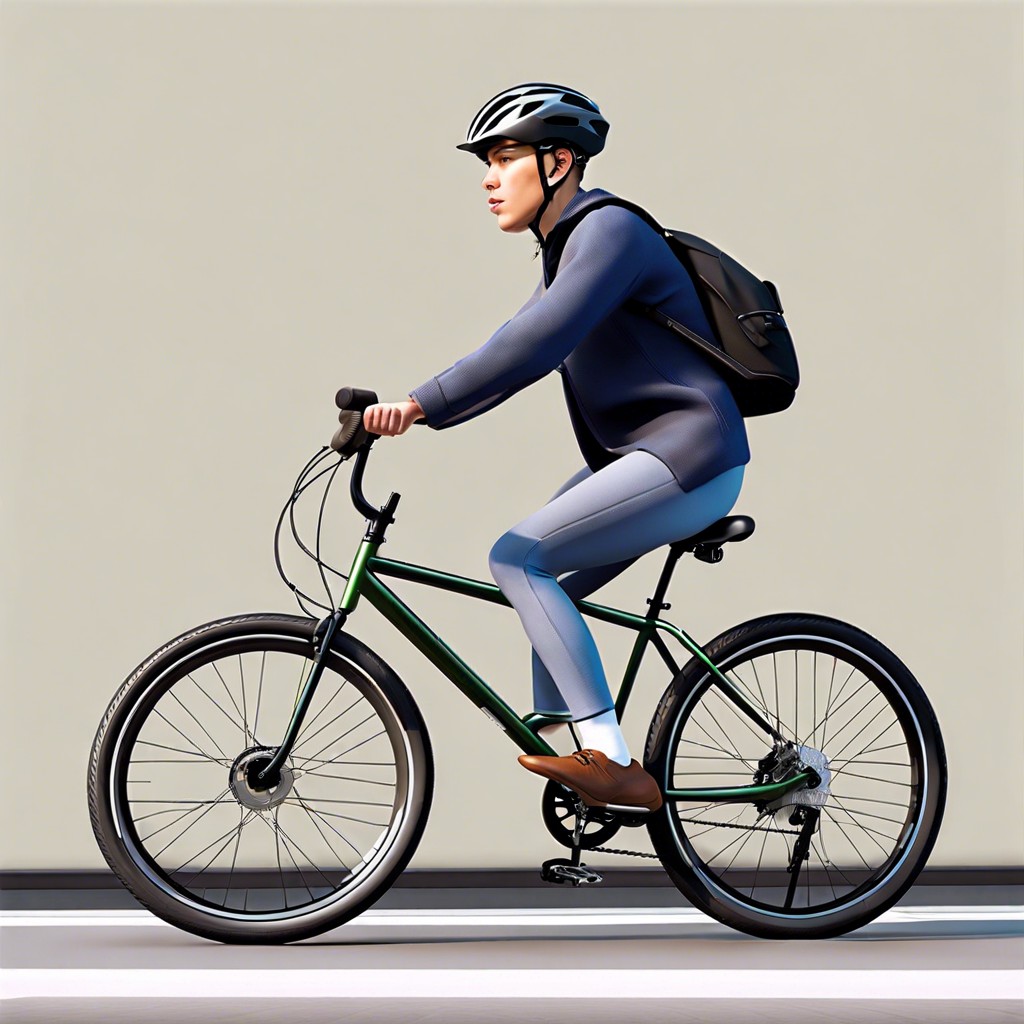This article provides guidance on selecting a 26-inch bike based on a rider’s height, ensuring optimal comfort and performance.
Key takeaways:
- Ideal rider height for a 26-inch bike: 5’ to 5’5”
- Factors to consider when sizing up or down on a mountain bike: personal comfort, bike handling, terrain type, leg and arm length, flexibility and core strength
- Standover height considerations for a 26-inch bike: clearance, inseam length, frame geometry, adjustments
- Reach and comfort for 26-inch bike riders: proper reach, adjustments, rider flexibility, impact on handling
- Important bike sizing tips: measure the inseam, check the saddle height, evaluate the handlebar reach, assess adjustments, consult a professional.
Body Measurements and Bike Sizing

Body measurements are vital in determining the correct bike size. A rider’s height is indicative but not definitive; inseam length plays a crucial role in sizing a bike.
A 26-inch bike typically suits riders between 5’ to 5’5” in height, yet individual limb and torso lengths can alter this range.
To achieve proper leg extension, measure the inseam to ensure the foot reaches the pedal at the lowest point without overextension. Arm length influences the reach to the handlebars, affecting comfort and control.
Therefore, when considering a 26-inch bike, account for both height and inseam to find the right fit.
When to Size Up or Down On a Mountain Bike
Choosing the optimal mountain bike size often hinges on personal preference and riding style.
Personal Comfort: If you feel cramped on a 26-inch bike, sizing up may offer increased comfort, especially on long rides.
Bike Handling: Riders who favor agility and tight trail maneuverability might opt for a smaller frame, while those desiring stability at high speeds could benefit from a larger size.
Terrain Type: For technical terrain, a smaller bike might provide better control. In contrast, open, fast trails often call for a larger bike for added stability.
Leg and Arm Length: A longer torso or arm length can warrant sizing up for suitable reach, ensuring proper bike control and reducing strain on your back and shoulders.
Flexibility and Core Strength: Riders with lower flexibility or core strength may find a smaller bike easier to handle, as it requires less body movement to control.
Remember, these factors should be balanced against the recommended size charts provided by manufacturers, and whenever possible, a test ride will yield the best information on whether to size up or down.
Standover Height Consideration for a 26-Inch Bike
To ensure a proper fit on a 26-inch bike, the standover height—the distance from the top tube of the bike to the rider’s crotch when standing over the bike—remains a pivotal measurement. Here’s what to consider:
1. Clearance: Ideally, aim for approximately 2 inches of clearance between the bike frame and your body for mountain bikes, which accommodates for the varied terrain and need for sudden dismounts.
2. Inseam Length: Measure your inseam to determine if the bike’s standover height is adequate. This is done by standing against a wall with a book wedged between your legs at crotch level and measuring from the top of the book to the floor.
3. Frame Geometry: Different bike models come with varying frame designs. Therefore, two bikes with the same wheel size might offer different standover heights. Check the specifics of each model.
4. Adjustments: A bike that is the right size but has a slightly higher standover height may still be made to fit by adjusting the seat post and handlebars; however, the standover height itself cannot be altered.
By respecting your body’s measurements in relation to the bike’s frame, you optimize safety, control, and comfort, enhancing the overall riding experience.
Reach and Comfort for 26-Inch Bike Riders
Reach—the distance from the saddle to the handlebars—significantly affects comfort on a 26-inch bike. Here’s how:
1. Proper Reach: This ensures that arms and torso have a slight bend, offering a relaxed position that aids in handling and reduces fatigue.
2. Adjustments: Stem length and handlebar height can be tweaked to optimize reach for individual riders.
3. Rider Flexibility: Flexibility and riding style play roles in determining ideal reach; more flexible riders may prefer a longer reach.
4. Impact on Handling: A reach that’s too long can make the bike feel unwieldy, whereas one that’s too short may affect steering and control.
To find the sweet spot, riders should test different setups and consider a professional bike fit.
Important Bike Sizing Tips
To ensure the best fit and comfort while riding a 26-inch bike, consider these essential tips:
- Measure the inseam: This is your leg length from crotch to ground. It’s critical for determining the correct standover height.
- Check the saddle height: When seated, your leg should have a slight bend at the knee when the pedal is at its lowest point.
- Evaluate the handlebar reach: You should be able to reach the handlebars comfortably with a slight bend in your elbows, without overextending.
- Assess adjustments: Look for a bike with adjustable components — such as seat posts and stems — that can fine-tune fit.
- Consult a professional: A bike fitting at a local bike shop can provide personalized adjustments beyond standard measurements.
Related
- 24-inch Bike for What Size Person: Ideal Fit and Sizing Tips
- Bike Size for Height: Choose the Right Bicycle for Your Frame
- How to Determine Bike Size: Choosing the Perfect Fit for Your Ride
- What Size Mountain Bike Do I Need: Choosing the Right Fit for You
- What Size Bike Do I Need: Find Your Perfect Fit